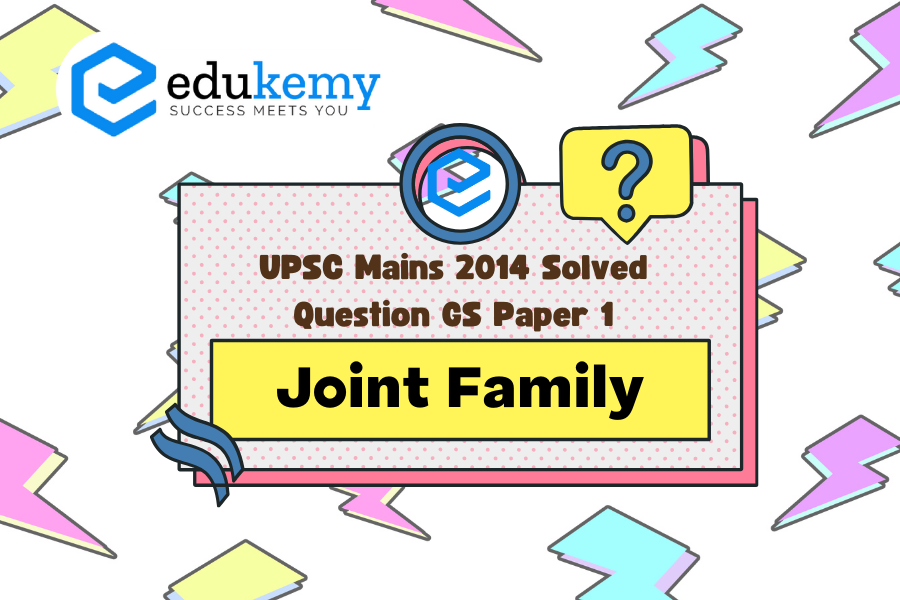The dynamics of a joint family, a cornerstone of traditional societies, undergo a complex interplay of economic factors and social values that dictate its life cycle. While social values undoubtedly influence the cohesion and longevity of joint families, it is increasingly apparent that economic considerations play a pivotal role in shaping their trajectory. Economic stability, access to resources, and financial independence often determine the sustainability of a joint family setup. In today’s rapidly changing socio-economic landscape, traditional norms are being redefined, and families are compelled to adapt to new financial realities. Thus, while social values may provide the foundation for a joint family, it is the economic circumstances that ultimately determine its longevity and resilience. This essay will delve deeper into this intricate relationship, analyzing the dominance of economic factors over social values in the life cycle of a joint family.
Tag: Salient features of Indian Society.
Contents
Decoding the Question:
- In the Introduction, try to define Joint Family and how they are going through a process of structural transformation.
- In Body,
- Define the life cycle of a joint family.
- Explain the factors affecting the life cycle of a joint family in India.
- In Conclusion, show the corresponding effects of social values and economic values.
Answer:
The joint family is an extension of the nuclear family (parents and dependent children), and it typically grows when children of one sex do not leave their parents’ home at marriage but bring their spouses to live with them. Members of a joint family share all the tasks of food gathering, trade, food preparation, and child-rearing; and at times the social organization is so cohesive that the discrete nuclear families are barely visible in the daily chores, with children addressing all the adult women as “mother.”
Life Cycle of Joint Family:
The life cycle of a joint family denotes the different phases that a family goes through. A joint family evolves into a nuclear family and then goes back to being a joint family. For example, parents and their child live together till the child reaches marriageable age. Once the child grows up, he/she leaves home to start his/her own family. At this stage, the joint family evolves into a nuclear family. At a later stage, the old parents might move back in with their son/daughter for various reasons.
Factors affecting the life cycle of a joint family in India:
Land Reforms: Earlier, the joint family members usually lived together due to common ancestral property, which was vast in size.
- Land reforms-imposed ceiling restriction on the landholdings.
- In many cases, the heads of the family resorted to the theoretical partition of the family by dividing the land among the sons to avoid the law of the land ceiling.
- Thus, the theoretical partition hastens formal partition, and sows the seeds for separate living.
- In many cases, real partition has taken place in the joint family, immediately after the implementation of the land ceiling laws.
Education and Gainful Employment: Education, industrialization and urbanization have opened the scope for gainful employment. Once they complete their education, most of them join service or opt for other employment avenues in the cities. They get married and settle in urban areas with their wives and children. Gradually, such separate family units become nuclear families..
Economic difficulties especially in Rural Areas: The rural development strategies in India have generated regional imbalances, sharpened class inequality, and have adversely affected the economic and social life of the lower strata of the rural people. In the backward areas, people suffer enormous hardship to earn a livelihood which pushes them to migrate to the urban areas.
Growing Individuals: A high sense of individualism is also growing among sections of the society.
- Penetration of the mass media, formal education, consumerist culture, and market forces have helped individualism grow at a faster rate than ever.
- Today, every individual tries to enhance his/her standard of living and status in the community outside the purview of the family and the ingroup.
- Often, value conflicts between an educated individualistic daughter-in-law and an old mother-in-law lead to the breakdown in the joint family system.
The trend of modernization has been dominant in India. The economic factors have been dominant in determining the life cycle of a joint family. However, the physical separation does not express the departure from the spirit of jointness of the family structure. The sense of effective cooperation in need and obligation to each other has continued prevalent among the family members despite being separated from the erstwhile joint family.
In case you still have your doubts, contact us on 9811333901.
For UPSC Prelims Resources, Click here
For Daily Updates and Study Material:
Join our Telegram Channel – Edukemy for IAS
- 1. Learn through Videos – here
- 2. Be Exam Ready by Practicing Daily MCQs – here
- 3. Daily Newsletter – Get all your Current Affairs Covered – here
- 4. Mains Answer Writing Practice – here


